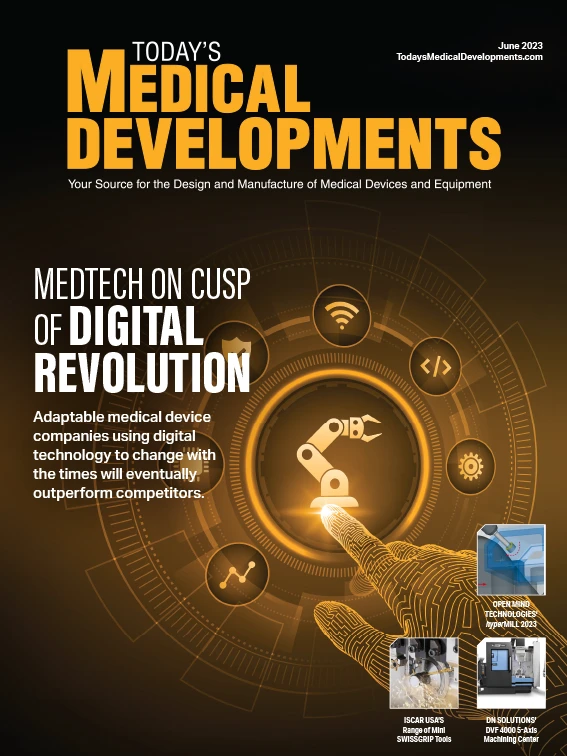
emodic@gie.net
The goal of successful medical device and equipment manufacturing is delivering quality products that adhere to global regulations while reducing production costs. A great approach for success is embracing a digital transformation, however, much relies on how this transformation is planned and executed throughout a company.
Yes, there are challenges when a company undertakes a digital transformation, so to have it succeed, one important place to start is achieving buy-in from the C-suite to the shop floor. Without getting everyone on board when starting down the path of digitization, pain points will arise, and the journey may not end with the planned outcome. Some goals of digitization are to achieve more visibility into machine productivity, increase communication across departments and different shifts, and increase quality and consistency.
Delaying a start down this path will cost companies. According to insights from McKinsey & Co., “Advances in data and analytics, artificial intelligence (AI), and machine learning (ML)… mean manufacturers can choose from hundreds of potential solutions and tech applications to improve their ways of working. Implemented successfully… it’s not uncommon to see 30% to 50% reductions in machine downtime, 10% to 30% increases in throughput, 15% to 30% improvements in labor productivity, and 85% more accurate forecasting.”
In addition to these benefits, medtech manufacturing must adhere to regulations globally – those of the U.S. Food and Drug Administration (FDA) to those of the EU Medical Device Regulations (EU MDR). These range from security of devices that need to be designed to thwart cyberattacks to traceability from the original raw material to the final product, which must include a unique device identification in human- and machine-readable form – ultimately improving patient safety, modernizing device post-market surveillance, and facilitating medical device innovation.
This month’s cover story looks at this digital revolution, noting adaptable medical device companies using digital technology to change with the times will outperform competitors. As the author writes, “Frost & Sullivan predicts the medtech industry is poised to generate $241 billion in revenue riding on digital transformation projects between 2018 and 2024. Medtech companies that can become digitally mature will likely disrupt the ecosystem and gain a competitive edge. On the contrary, businesses lagging in cutting-edge technology risk slipping behind competitors. The same applies to companies just testing the waters rather than genuine digital transformation and reinvention.”
Where does your digital transformation stand?

Explore the June 2023 Issue
Check out more from this issue and find your next story to read.
Latest from Today's Medical Developments
- Arcline to sell Medical Manufacturing Technologies to Perimeter Solutions
- Decline in German machine tool orders bottoming out
- Analysis, trends, and forecasts for the future of additive manufacturing
- BlueForge Alliance Webinar Series Part III: Integrate Nationally, Catalyze Locally
- Robot orders accelerate in Q3
- Pro Shrink TubeChiller makes shrink-fit tool holding safer, easier
- Revolutionizing biocompatibility: The role of amnion in next-generation medical devices
- #56 Lunch + Learn Podcast with Techman Robot + AMET Inc.





